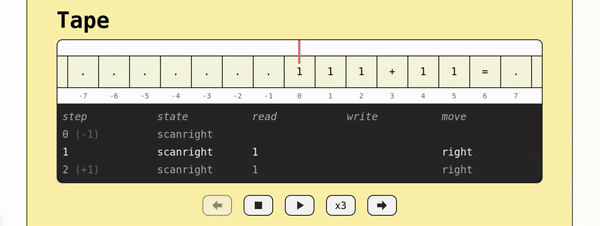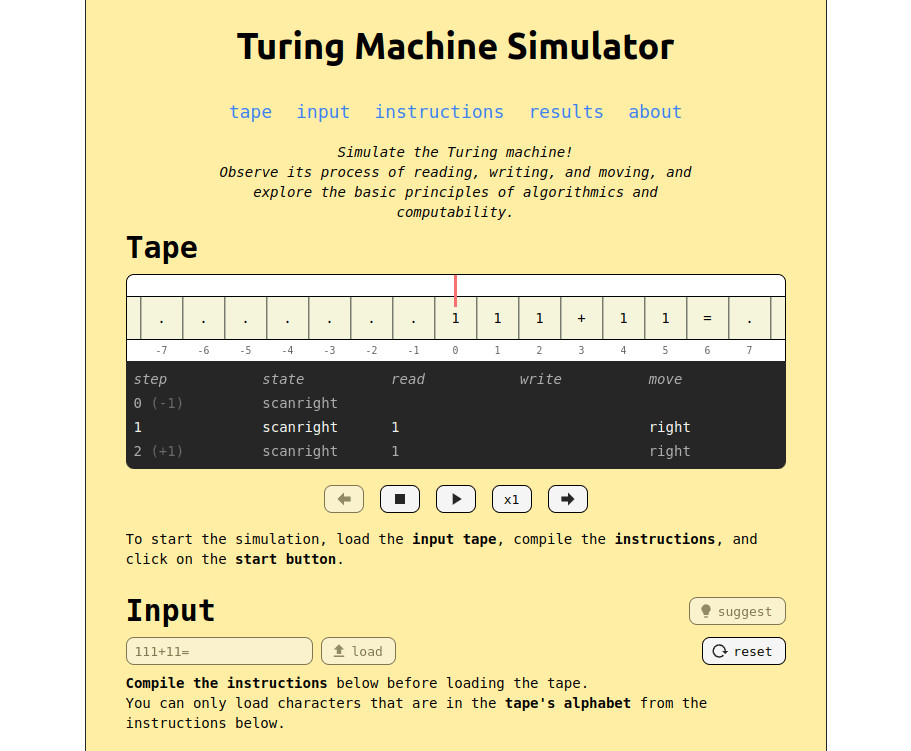A simple Turing machine simulator with an infinite tape visualizer, implemented in functional programming paradigm.
- Select or create a new instruction set
- load an input in the tape
- run the machine
- play with the tape visualization
- check the output
npm installnpm run dev
# check localhost:5173npm run testThe machine is a simple state machine constituted by:
- a tape
- a head
- a set of instructions
- a set of states
- a current state
The machine reads the tape at the head position and looks for an instruction that matches the current state and the current symbol. According to this state instruction, the machine writes a new symbol, moves the head to the left or to the right, and changes to a new state. And so on until the machine reaches a final state.
The Turing machine, conceptualized by British mathematician Alan Turing in 1936, was introduced in his paper "On Computable Numbers", with an Application to the Entscheidungsproblem. This work was pivotal in the emerging fields of mathematical logic and computation theory in the early 20th century.
During World War II, Alan Turing played a crucial role in breaking the Nazi Enigma code at Bletchley Park, significantly contributing to the Allied war effort and saving countless lives. This experience influenced his ideas about computation and the potential of machines to perform complex tasks.
A Turing machine is a theoretical device that can simulate any computer algorithm. It has an infinite tape divided into cells, each holding a symbol, and a read/write head that moves along the tape, reading and writing symbols based on predefined rules (instructions).
A Turing machine operates based on states and transitions. At any time, it is in a specific state with the read/write head on a particular tape cell. Depending on the symbol read and the current state, it can write a new symbol, change states, and move the head left or right. This mechanism allows it to model any numerical computation or algorithm.


